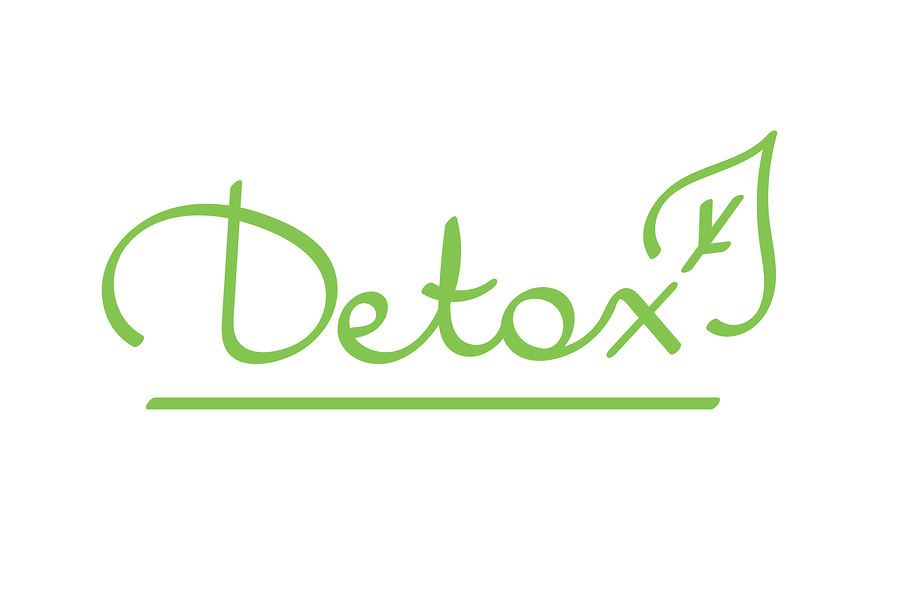- Make It Yourself Lavender Heart-Shaped Bath Bombs!
- 20 Things You Never Knew About “Down There”
- 12 Best Foods For Those Suffering From Arthritis Pain
- 12 Personal Hygiene Mistakes Almost Everyone Makes (Mom Never Told You About #4!)
- 15 Medicinal Plants And Herbs From The Cherokee People
- 12 Mind-Blowing Benefits Of Drinking Coconut Water During Pregnancy
- 12 Outstanding Winter Foods That Won’t Fatten You Up Like A Christmas Turkey
How To Do A Heavy Metal Detox

Photo credit: bigstock.com
The phrase “detox” is bandied about a lot these days, and there is often no real consensus on what it is and how it should be done. The truth is, a “detox” for one condition can be very different than for another, and simply drinking some juice and giving it no further thought is not the way to go about it. This is especially true in the case of heavy metal contamination. This is a health issue that affects millions of people, perhaps even the majority of people in the world today, and they probably don’t even know it.
In this article you will learn about the most common forms of heavy metal toxicity, and how to cleanse these harmful impurities from your system.
What are “heavy metal” toxins?
This term refers to the accumulation of trace amounts of metals in the body. Exposure to metals has occurred throughout human history, but after the Industrial Revolution in the early 19th century, the number of chemicals and metals introduced into the environment exploded. It became common for humans to come into contact with greater concentration of chemicals like mercury, cadmium, arsenic, and more. This could occur passively with people unknowingly absorbing it just going about their daily business, or as a result of occupational exposure via new manufacturing processes.
Continue to Page 2

Photo credit: bigstock.com
But what is so dangerous about these heavy metals?
Heavy metals can accumulate in the body over time, and this contamination can contribute to a smorgasbord of health problems and even death. The metals considered most dangerous by the World Health Organization (WHO) are mercury, cadmium, lead, and arsenic.
Cadmium is widely used is the production of rechargeable batteries. Cadmium can also be inhaled via exposure to cigarette smoke, and cadmium compounds also find their way into some foods. Cadmium exposure can contribute to an increased risk of bone fracture, and damage to the kidneys.
Mercury is one of the most common heavy metal contaminants and also one of the most dangerous. Ever since the Industrial Revolution, exposure to mercury became more common. The degree to which a person was at risk for contamination often depended on their line of work.
The profession of hat making, for example, required the use of mercury, which helped Victorian-era hats attain their stiff and rigid forms. Coming into direct contact with all that mercury day in and day out took a toll on the hat maker’s health. Mercury would build up in their bodies, an element which, in high concentrations, can contribute to mental illness and even death. The average hat maker had about three to five years before developing symptoms of mental deterioration. This is the origin of the phrase “Mad Hatter.” When people wore those hats, they too could be exposed.
Nowadays, mercury exposure often occurs through food. Certain types of fish are particularly susceptible to mercury contamination. Tuna, shark, and swordfish often have trace amounts of the metal in their flesh, and freshwater fish like bass and pike can be contaminated as well. You don’t have to give these up entirely, but try not to overindulge.
Arsenic exposure usually occurs by consuming contaminated foods or drinking water. Arsenic exposure from ingestion can increase the risk of developing skin cancer, while inhalation of arsenic fumes, which usually occurs in certain occupations, can increase the risk of lung cancer.
Lead is one of the more well-known contaminants. Lead was once widely used in paint and other common household items, as well as gasoline (petrol). Sometimes municipal water facilities, such as those in Flint, Michigan in the United States, can become contaminated with lead, poisoning entire communities. When the body is exposed to lead compounds, it can enter bloodstream and cross the blood-brain barrier, affecting the health of the brain. The effects of lead poisoning can be devastating, particularly in children. The effects can include lower IQ, cognitive impairment, and cause increased risk of behavioral problems.
Continue to Page 2

Photo credit: bigstock.com
How to Detox the Heavy Metals Out of Your System
While this article may have painted a rather dark picture, there is some good news: Cleansing heavy metals out of your body is a fairly simple task. Use of some the ingredients listed below to prepare your own detox drink, or simply eat the food listed.
Wild Blueberries. These delicious fruits are included in most “superfood” lists, and with good reason: They are packed with antioxidants and are very beneficial for eliminating heavy metals in your body. Wild blueberries have phytonutrients that can actually draw metals out of your tissue and flush them out. Domestic blueberries are very nutritious, but not as effective for this purpose, so try to go for the wild variety if you can find them.
Spirulina is a type of blueish-green colored algae, and is quite possibly one of the healthiest things you can eat. Spirulina can actually absorb heavy metals from your central nervous system, liver, and brain. The most effective way to use it is to combine it with barley grass extract, which absorbs metals from other organs like the pancreas, thyroid, and intestines. Mix two teaspoons of each with coconut water or fruit juice for the best results.
Finally, you may want to try some Atlantic Dulse, a type of edible seaweed with incredible metal-cleansing properties. Dulse binds to the metal compounds and pulls them out of your tissues, including areas like the intestines where other foods might have a harder time reaching them. It is often available in dried flake form, so try eating two tablespoons of flakes for each day that you are detoxing.
READ ALSO: 10 Smoothie Recipes With Detox Effects And A Delicious Taste Infographic
Most detox programs call for a 30-day daily cleanse. However, everyone’s body, health, and previous exposure to heavy metals is different, so this is a general rule of thumb. Talk you your doctor before beginning yours and pick the program that is right for you.
References:






























